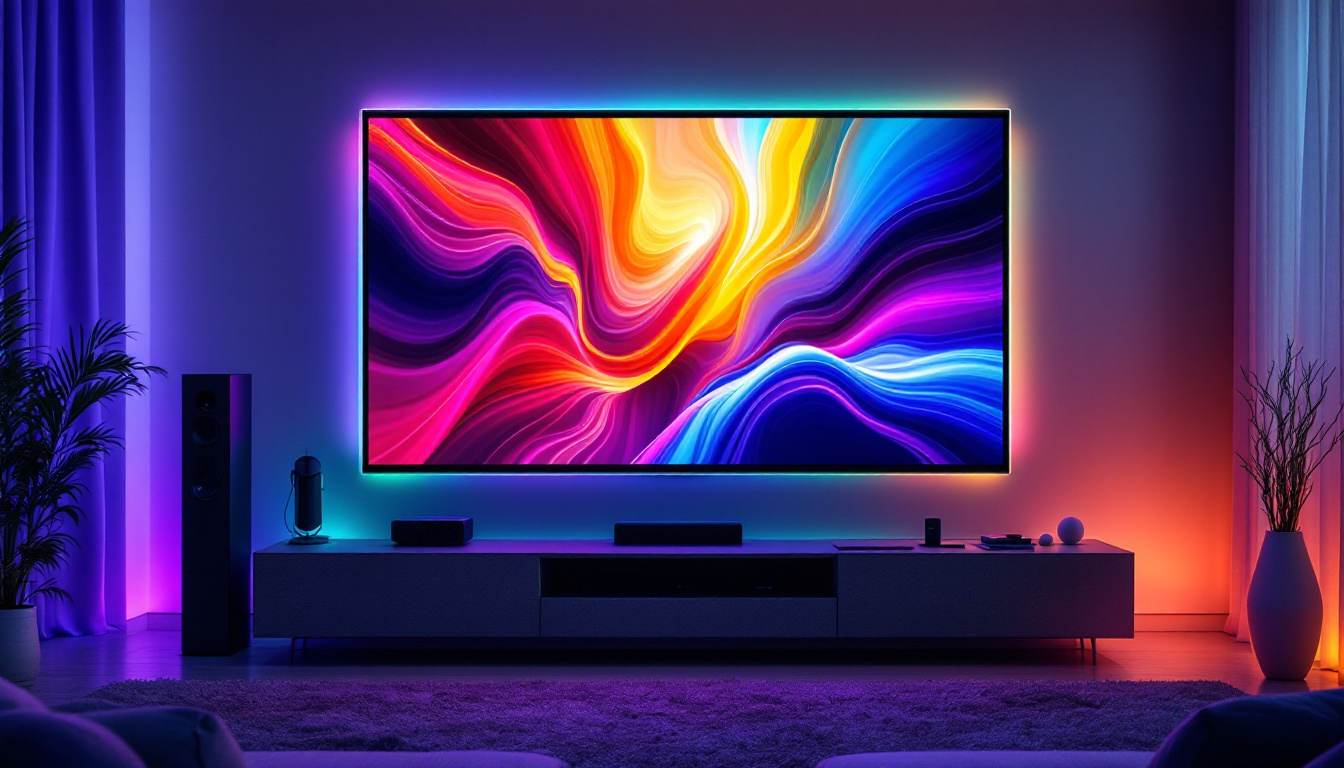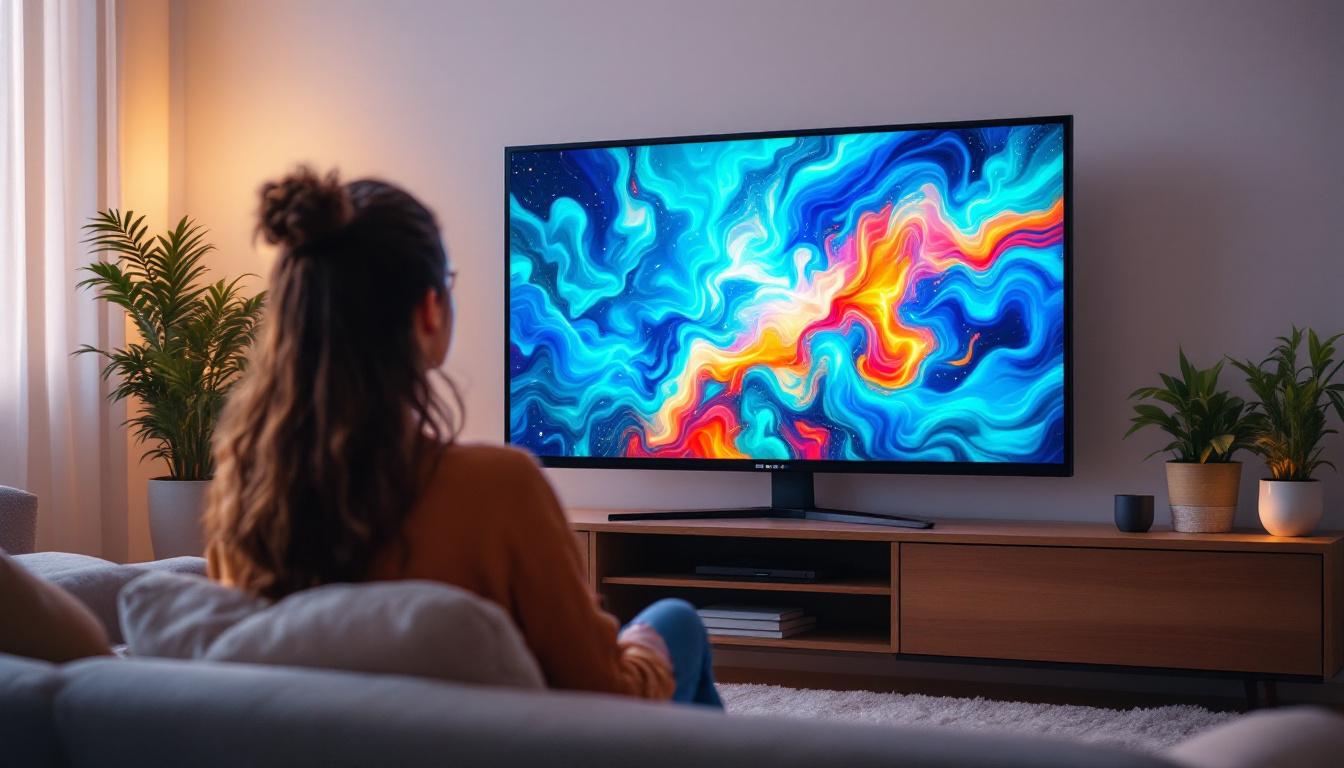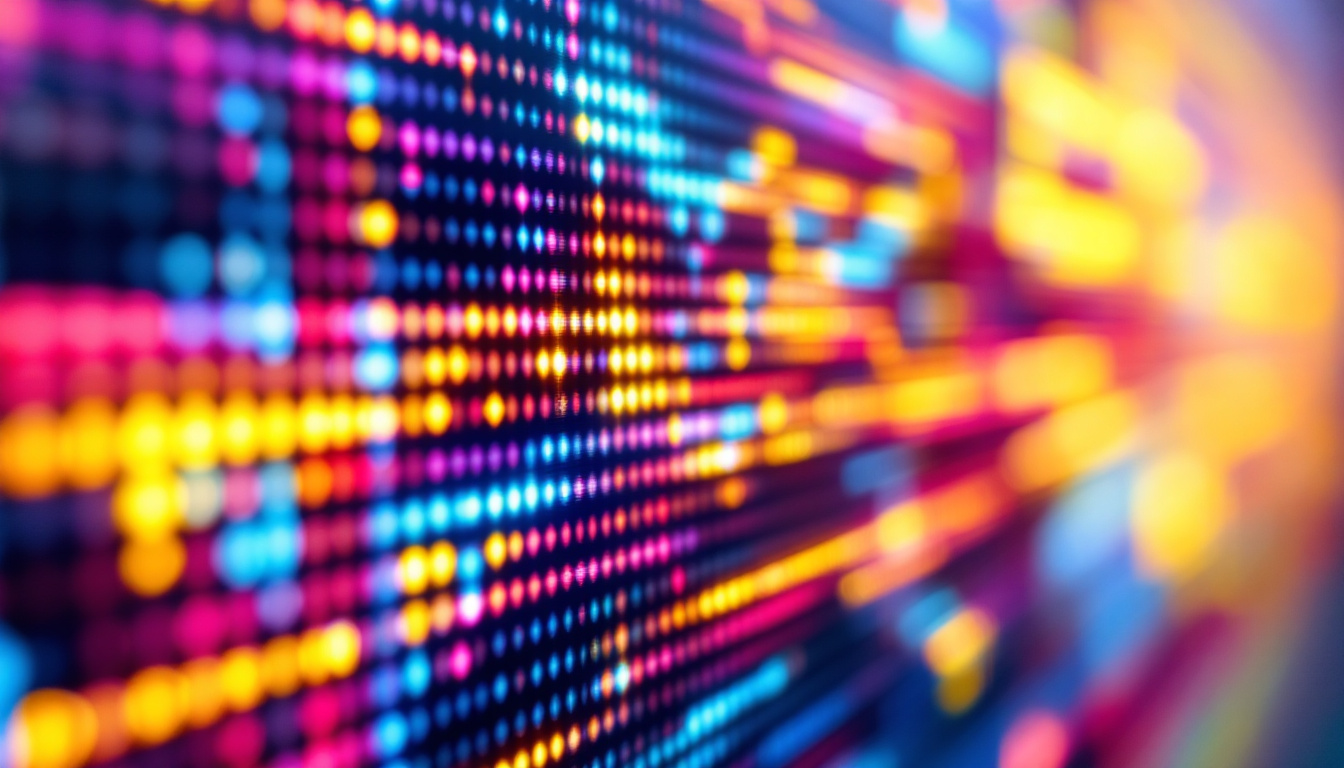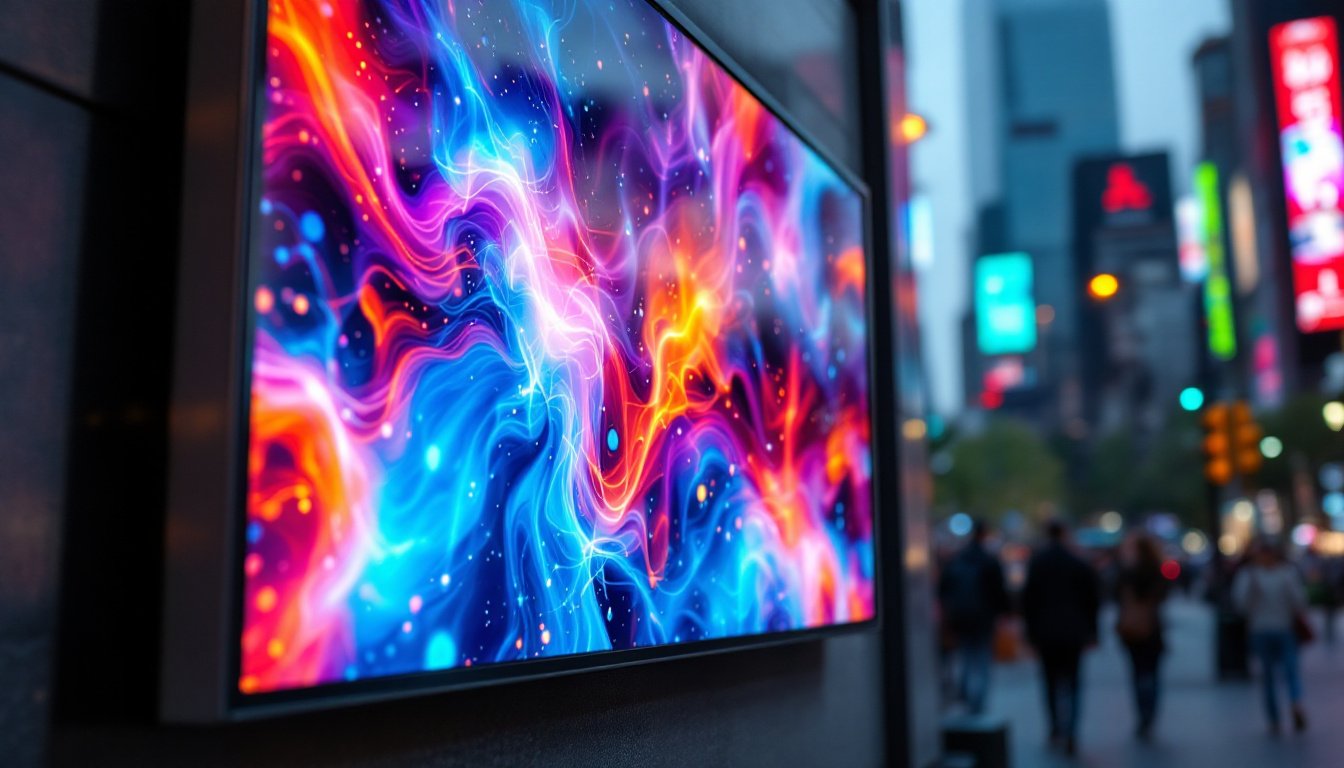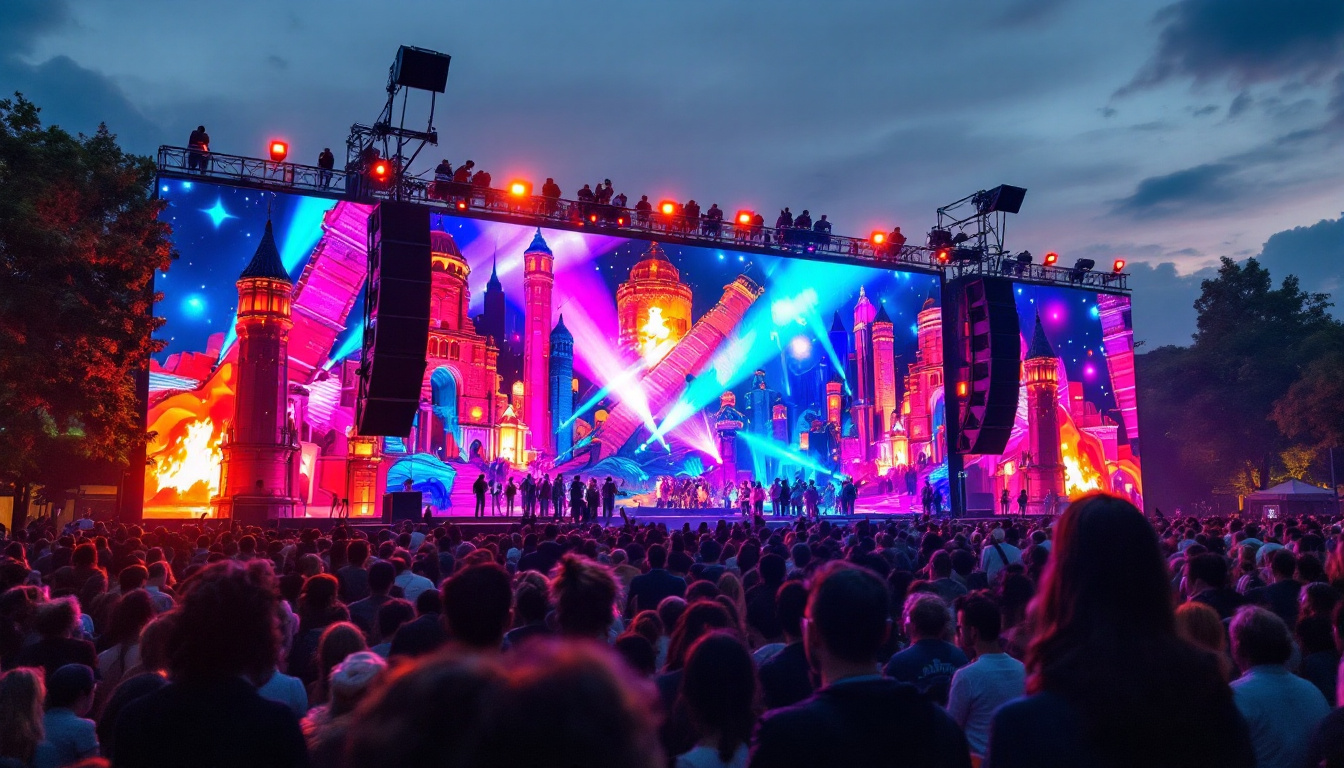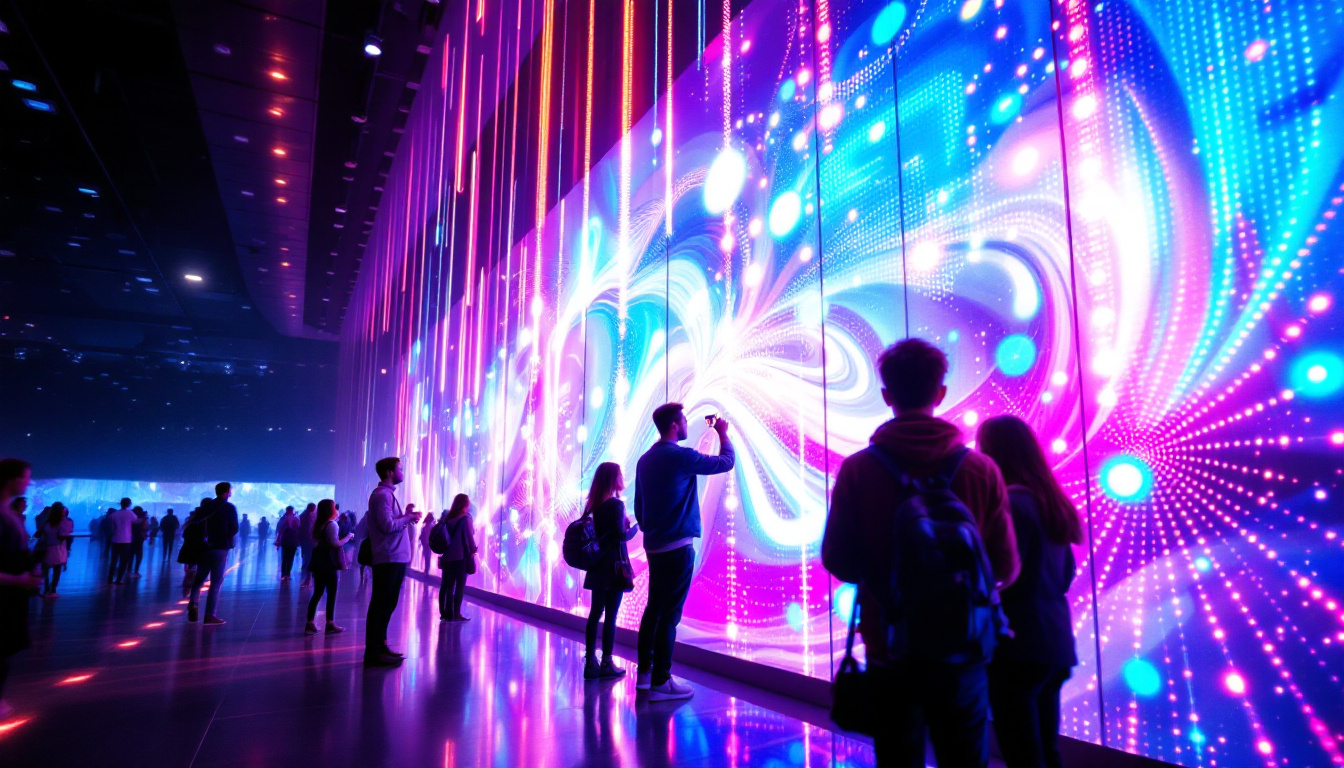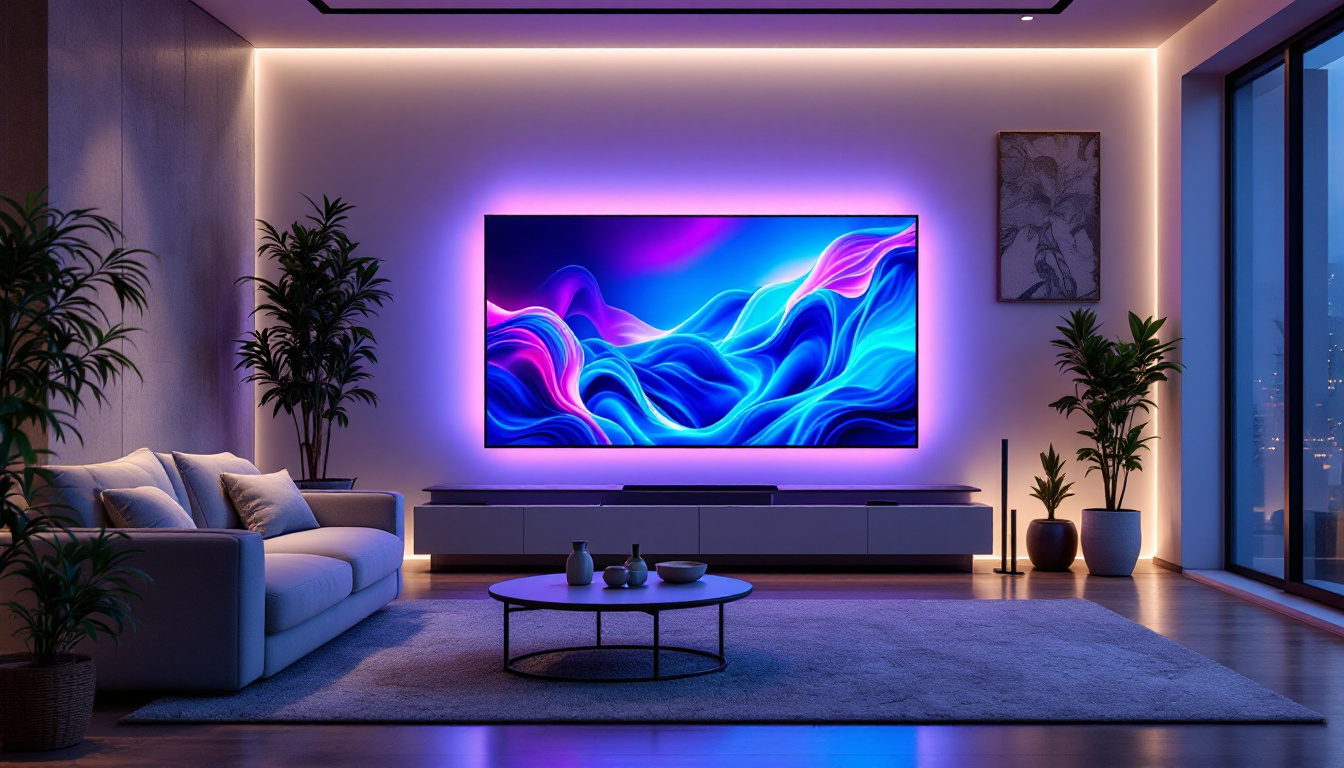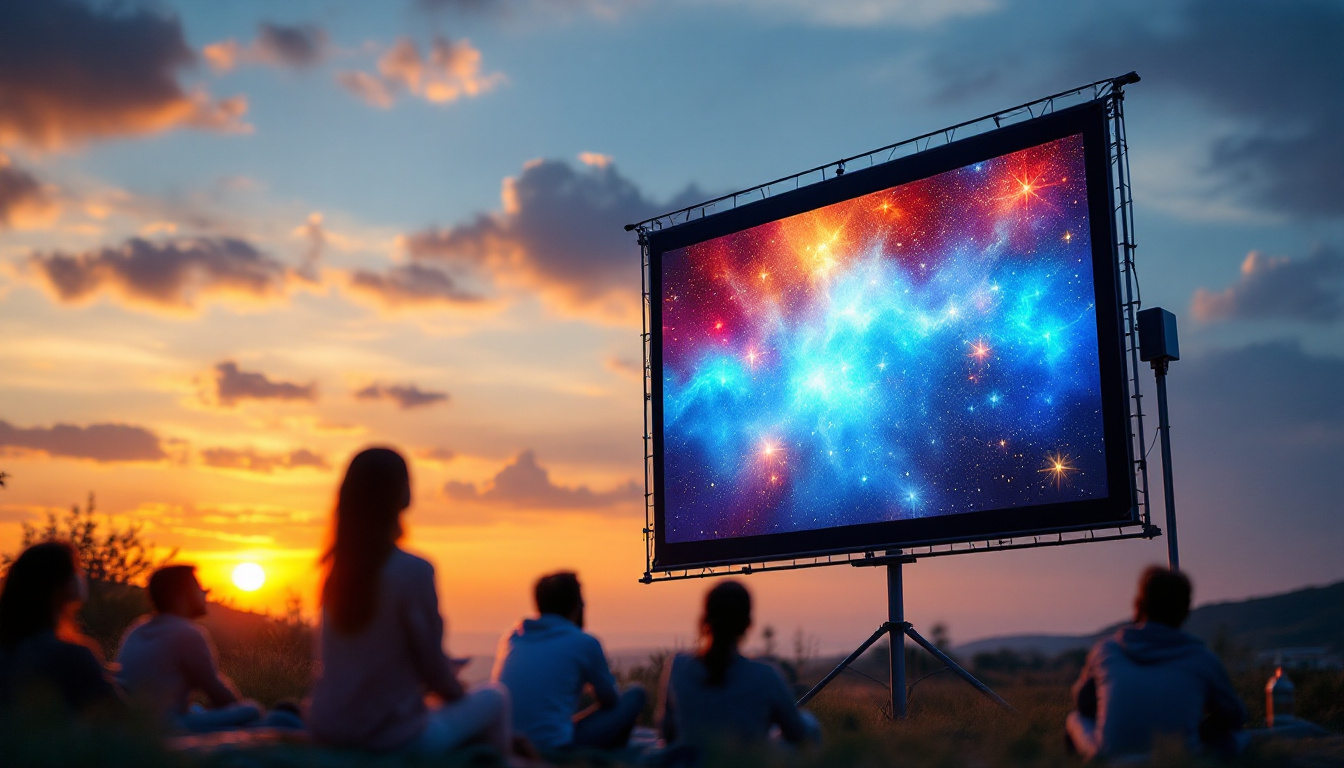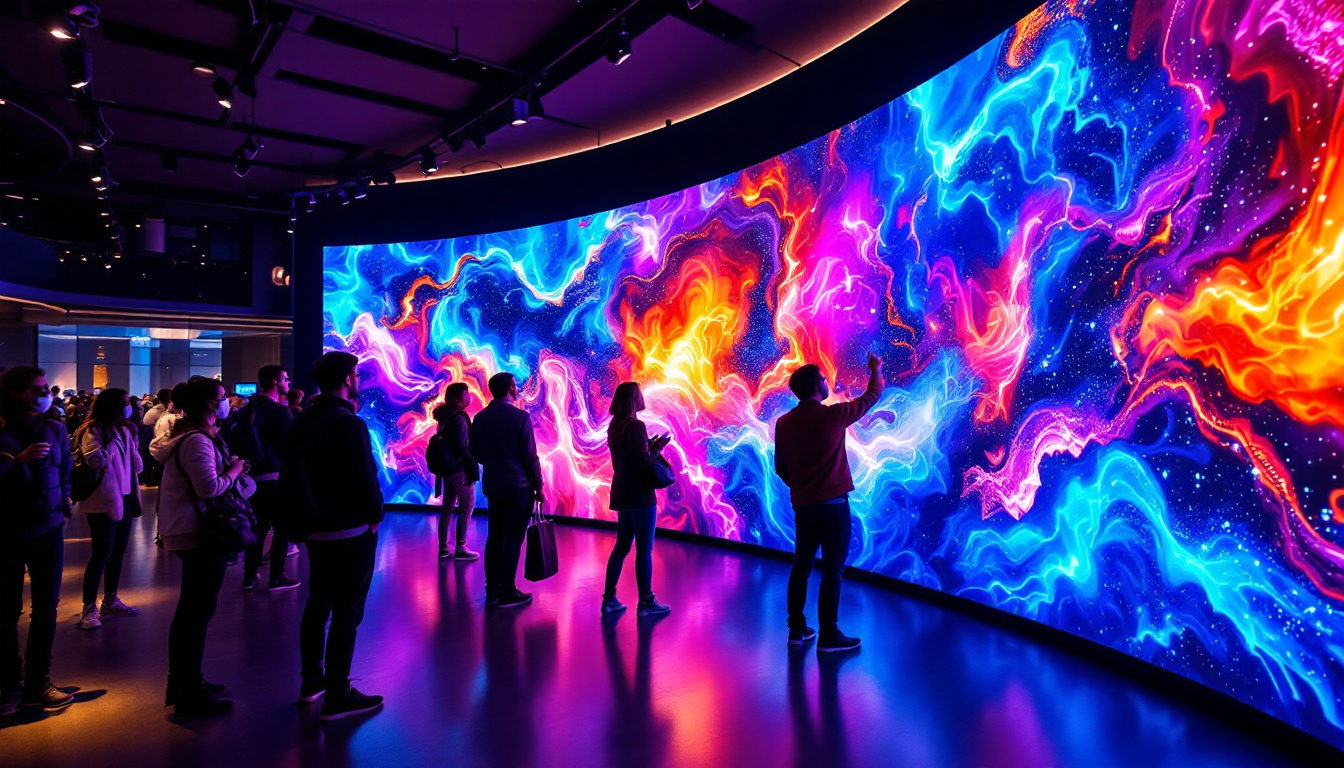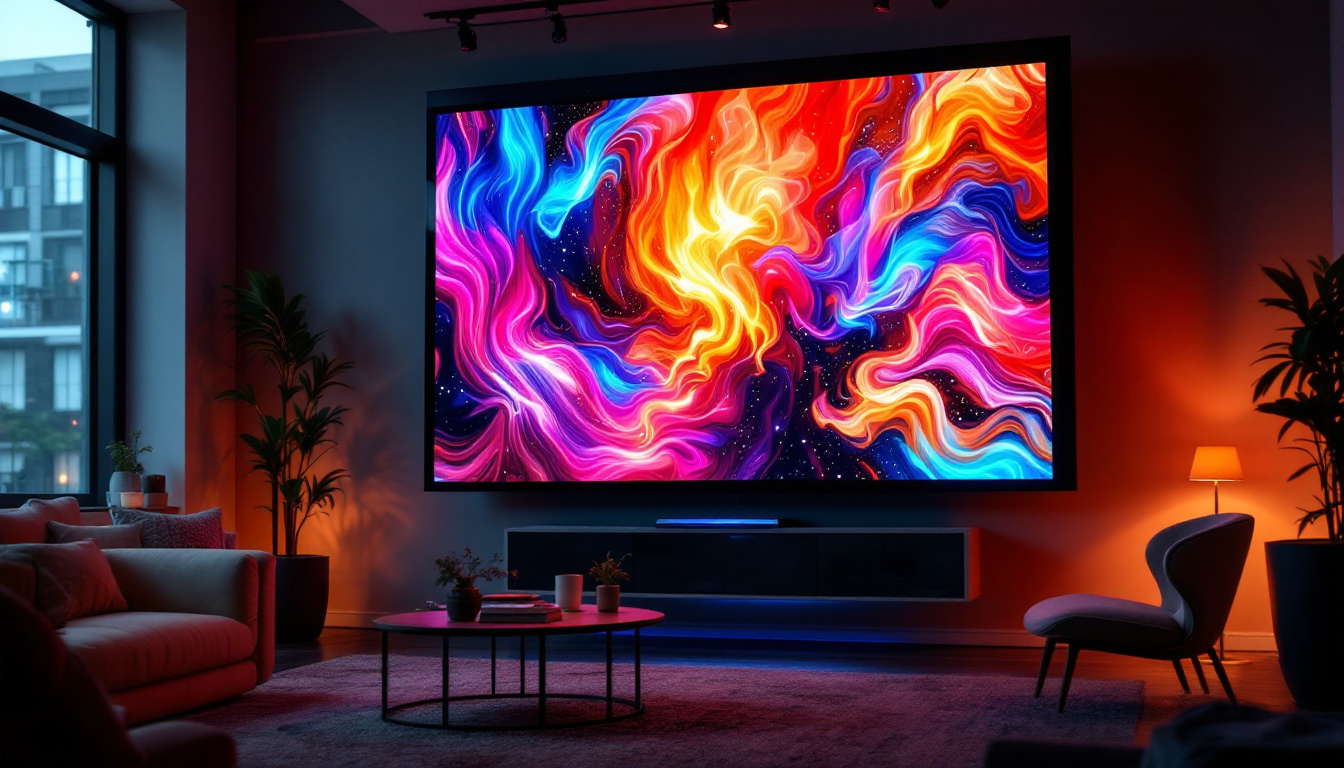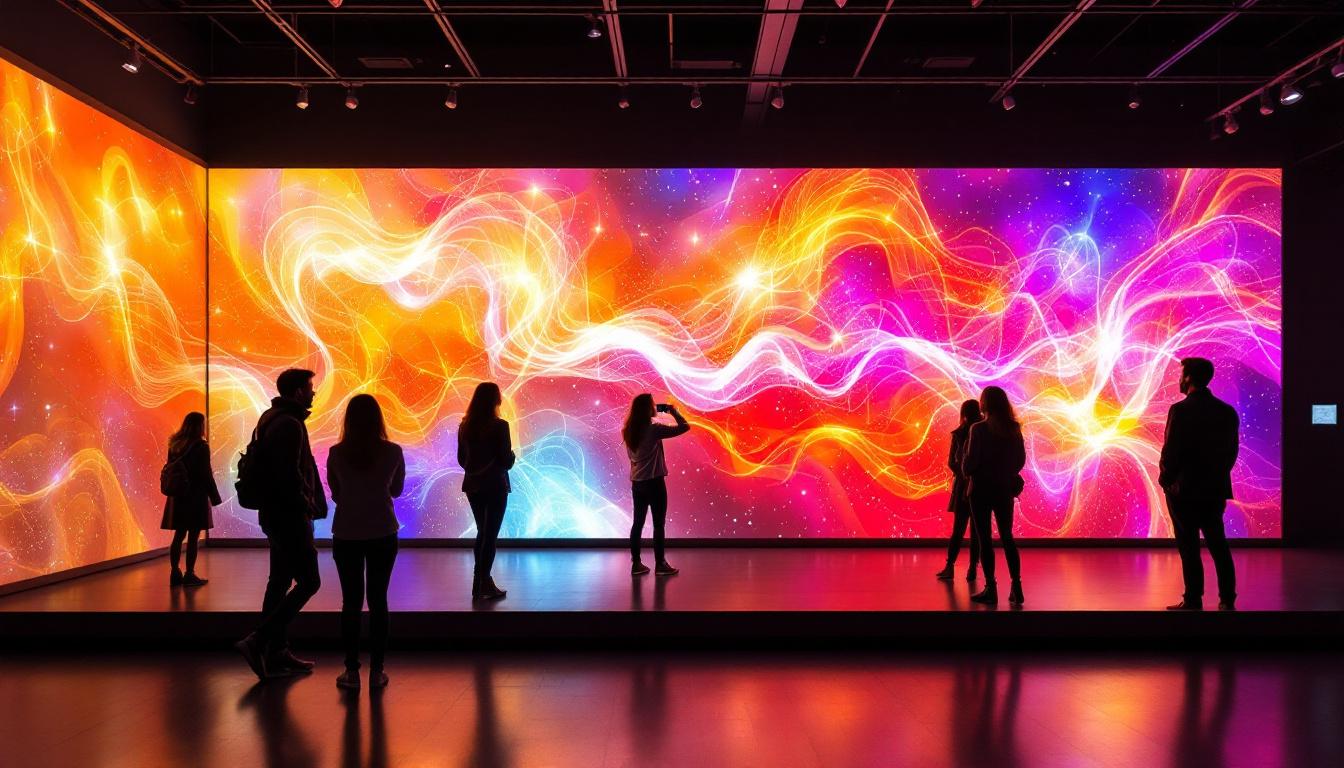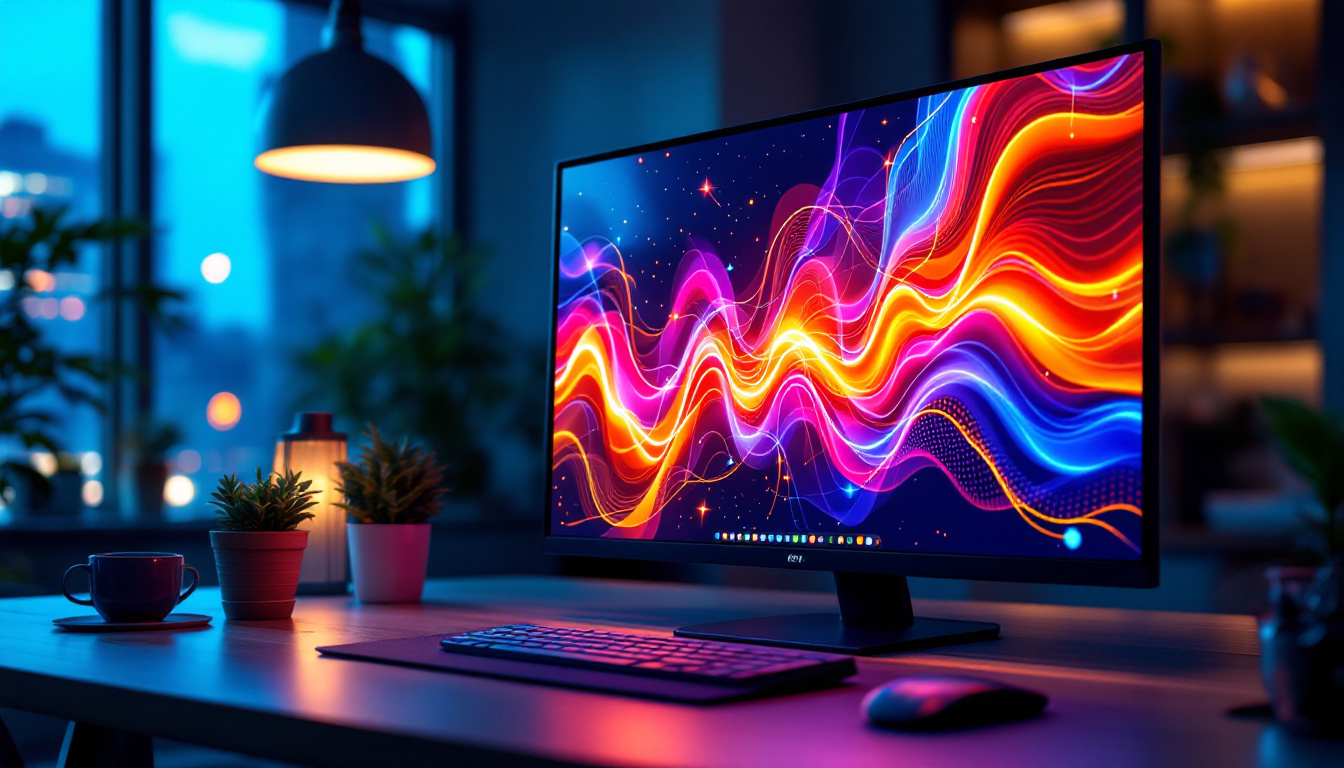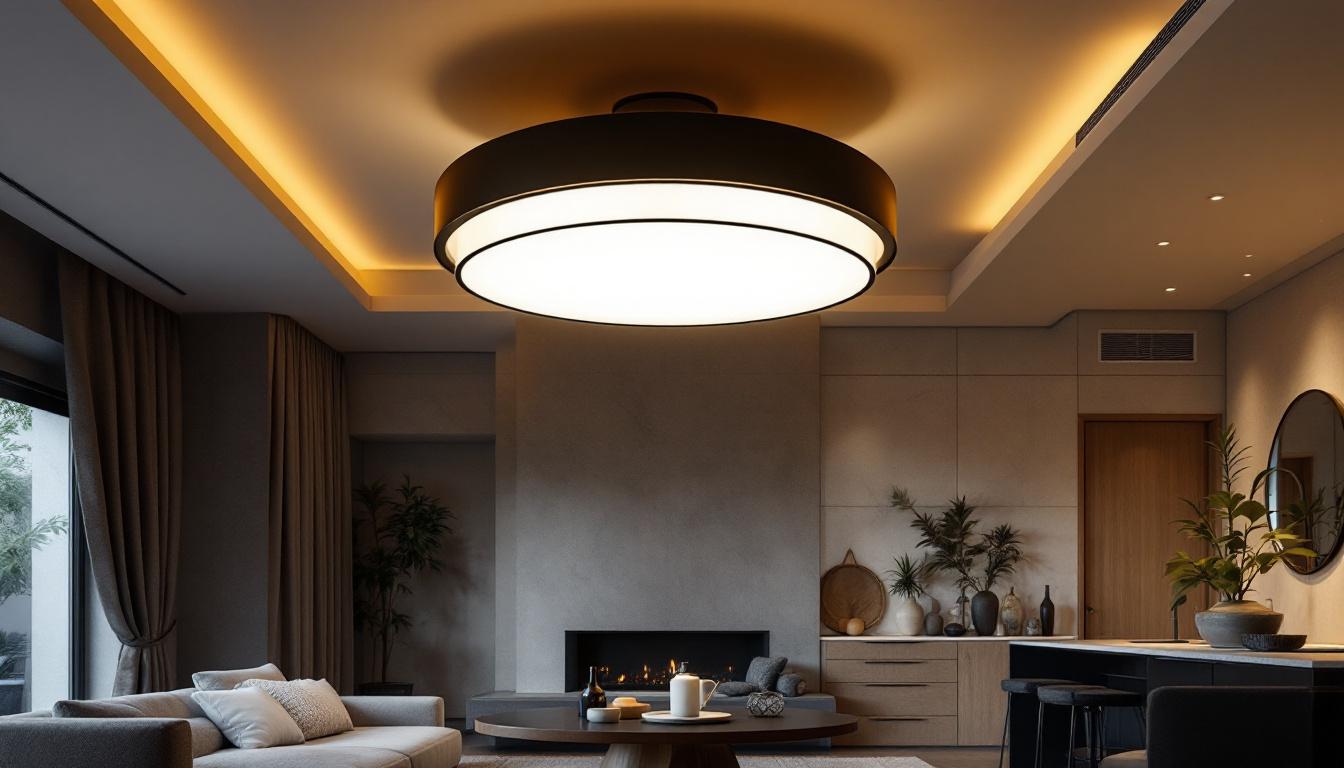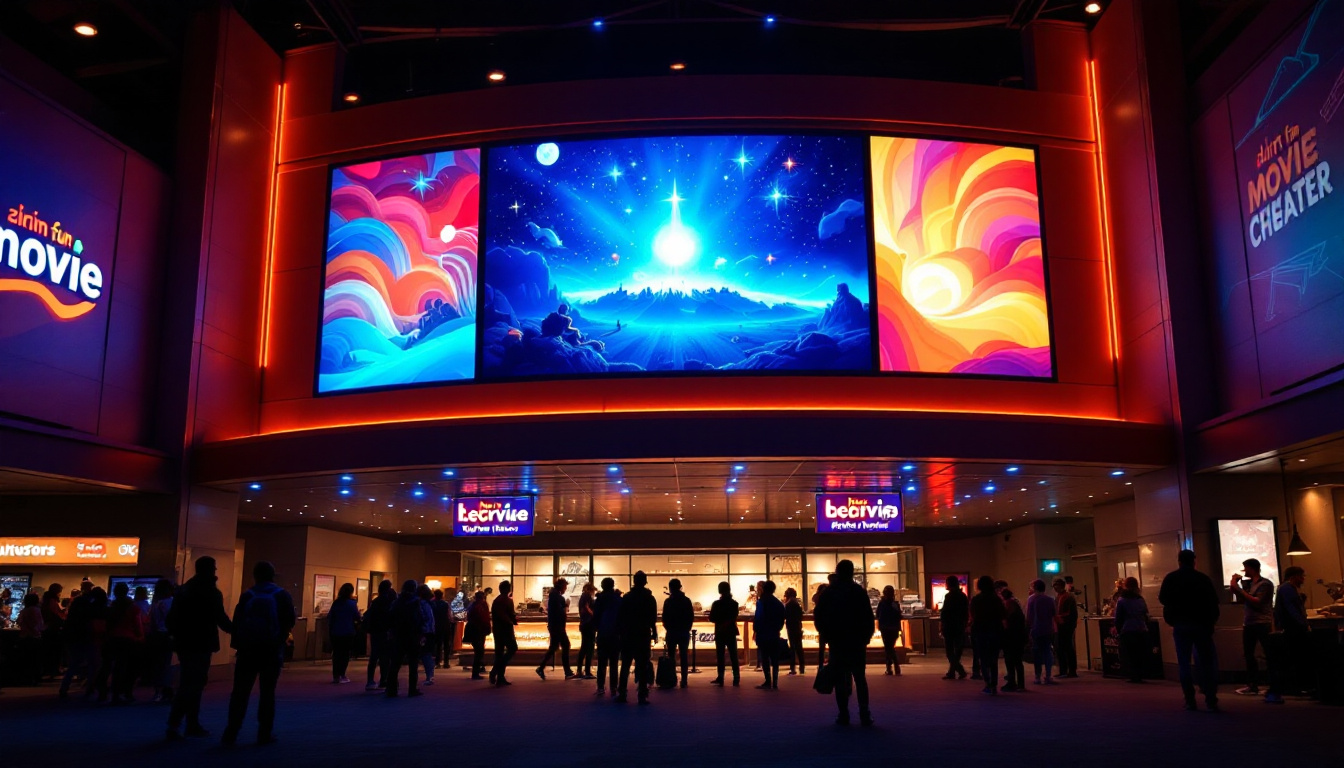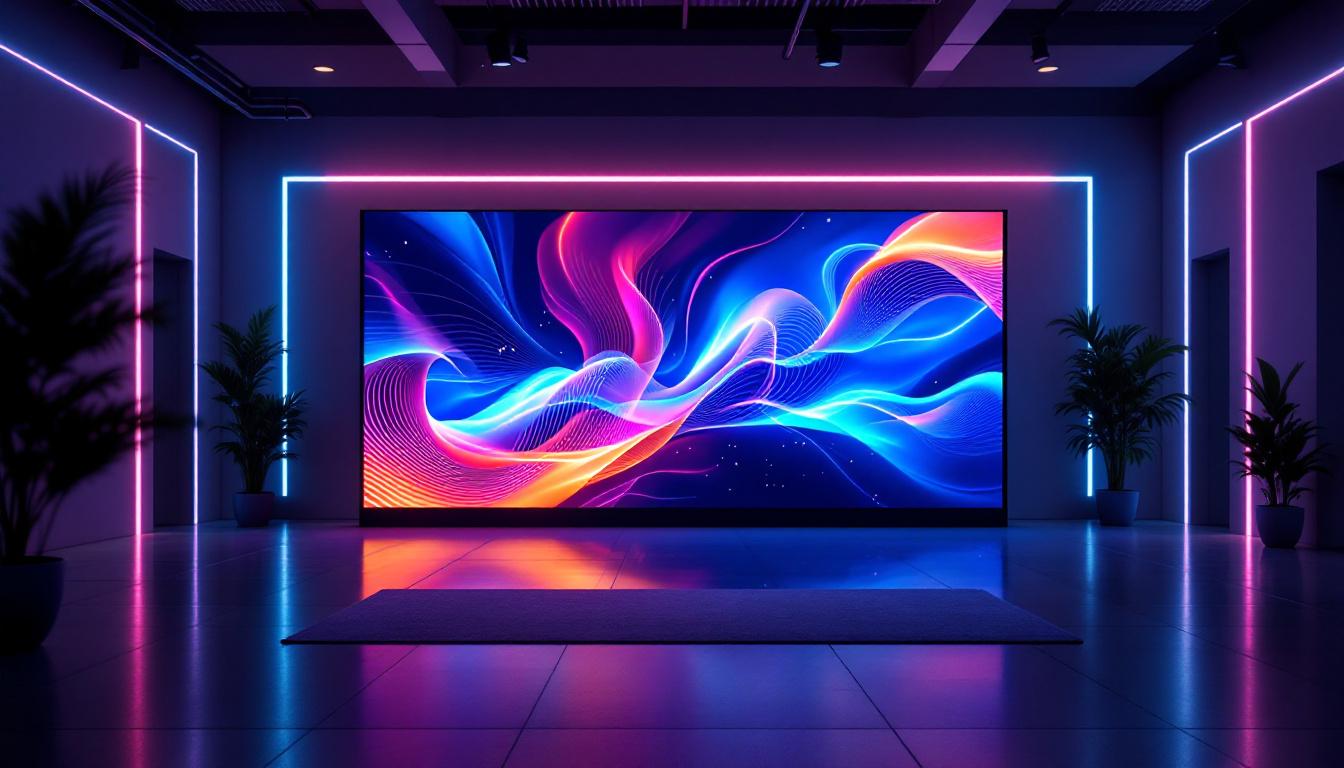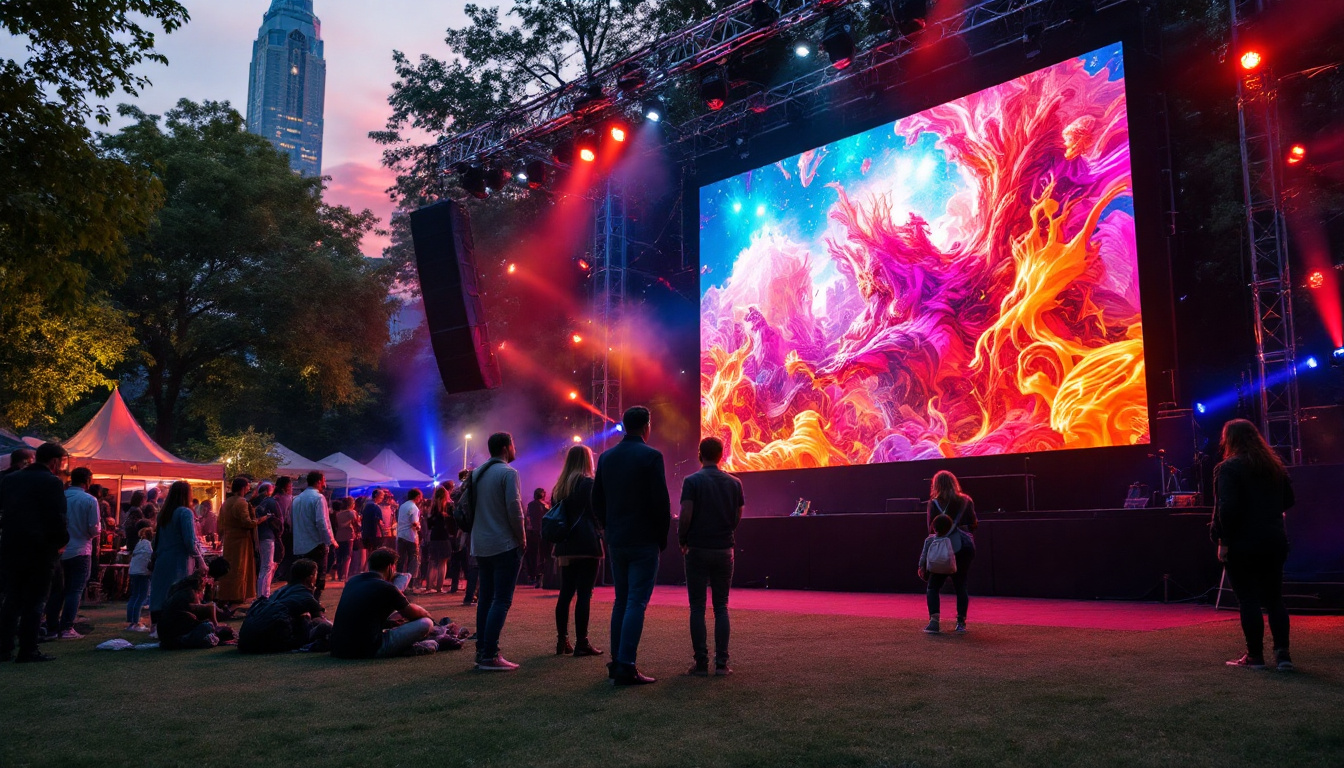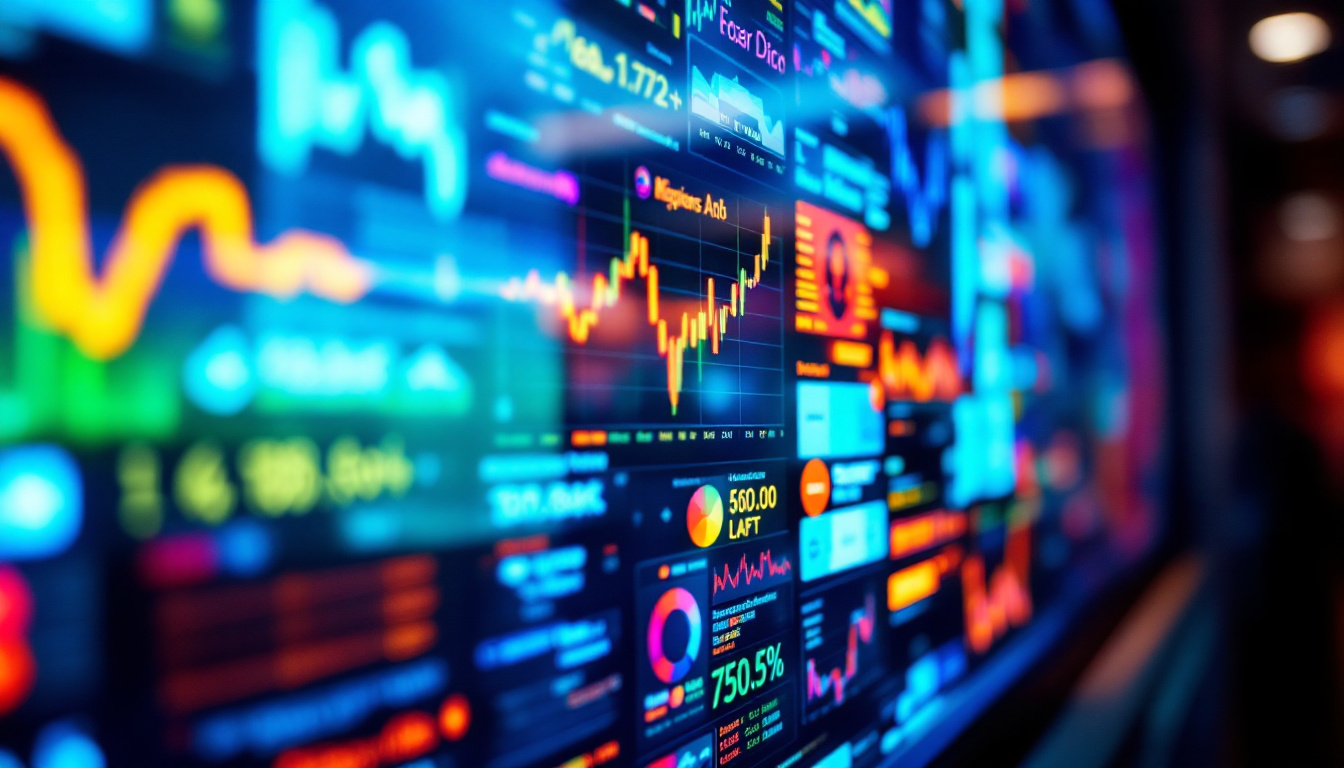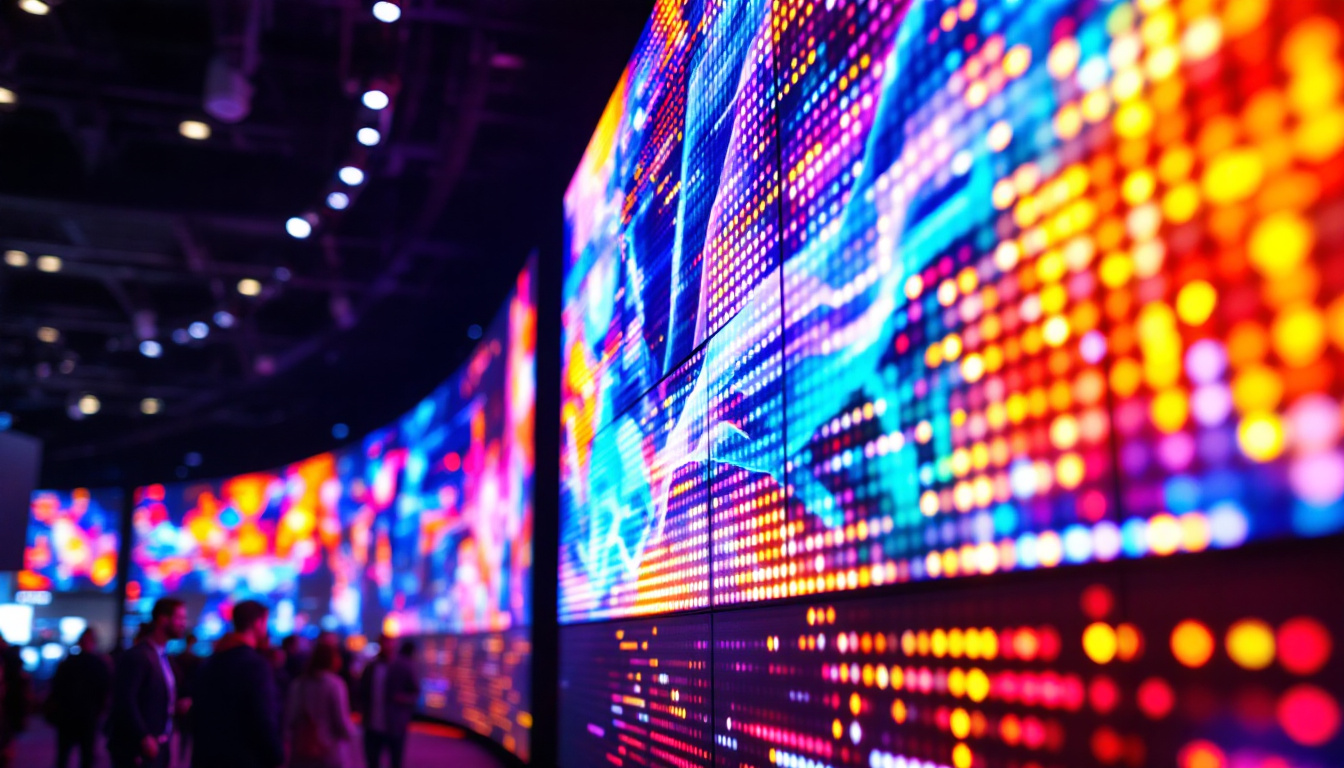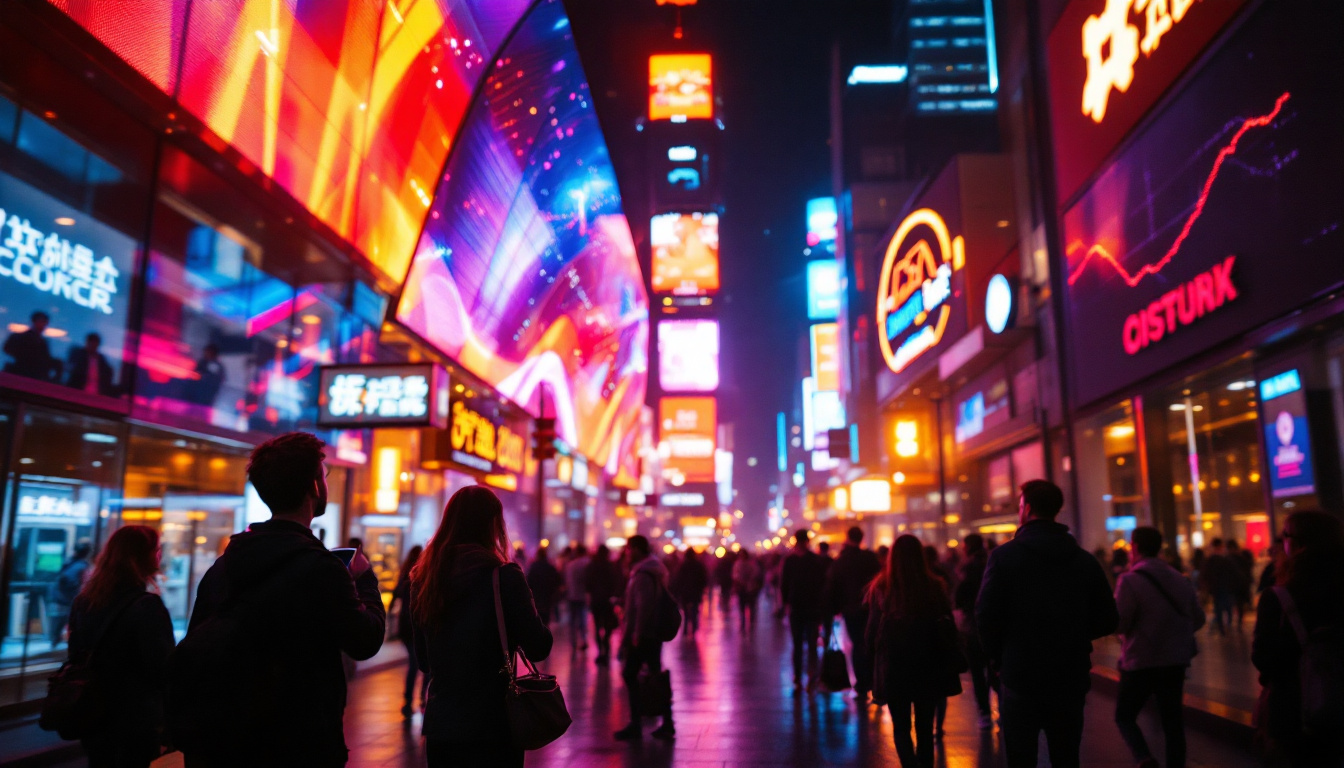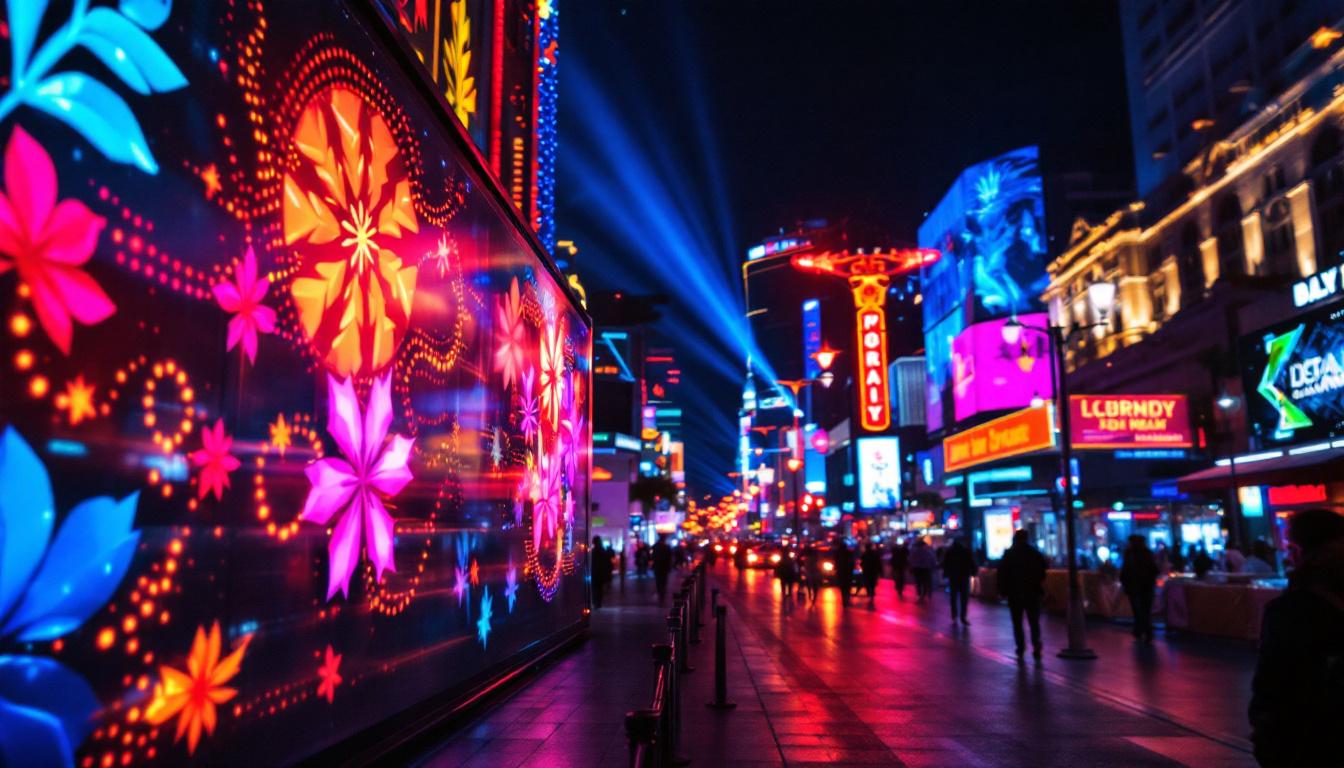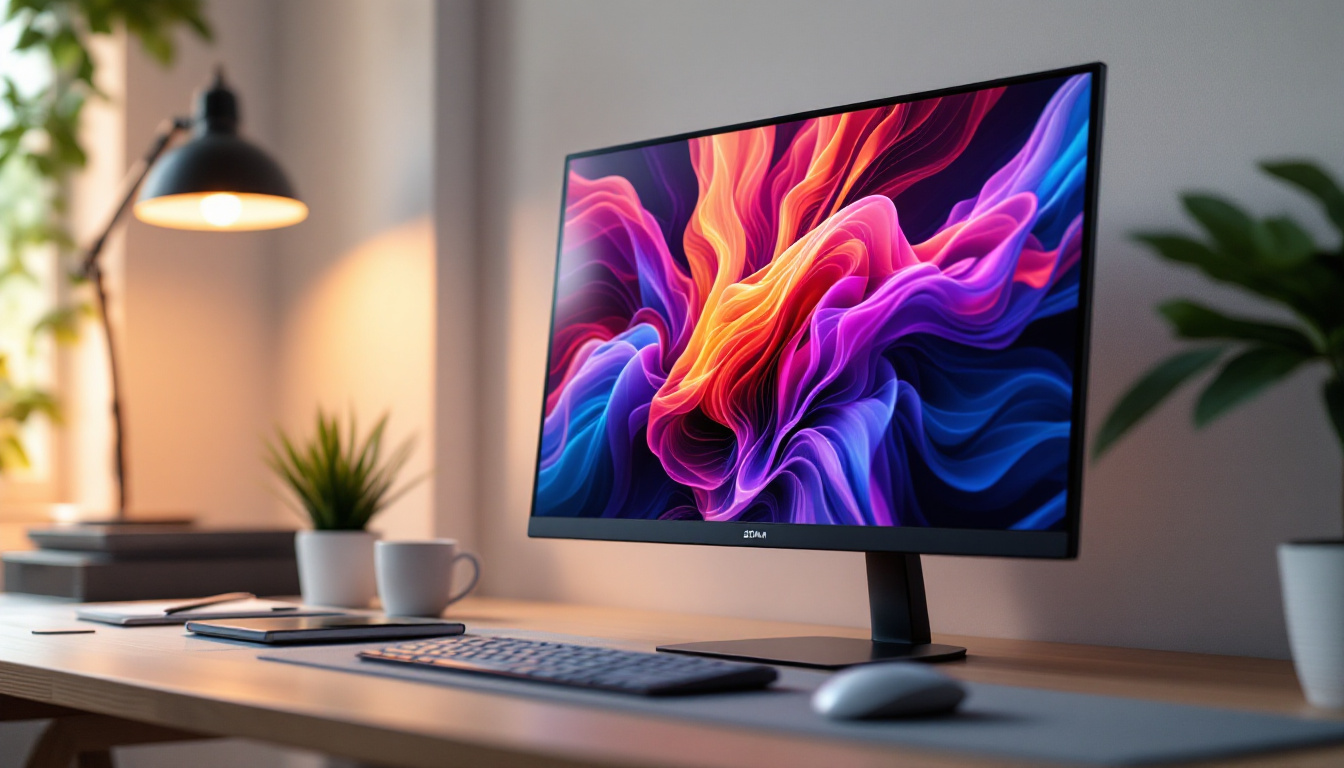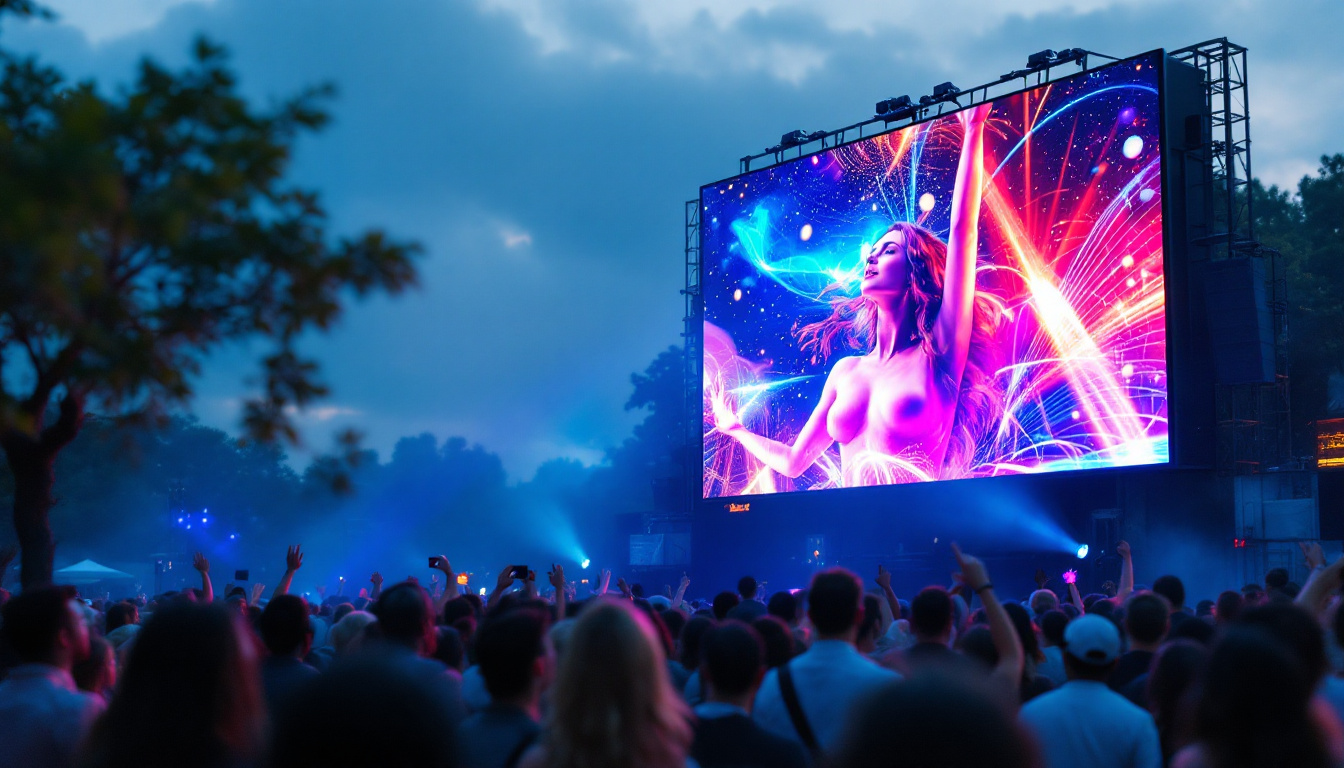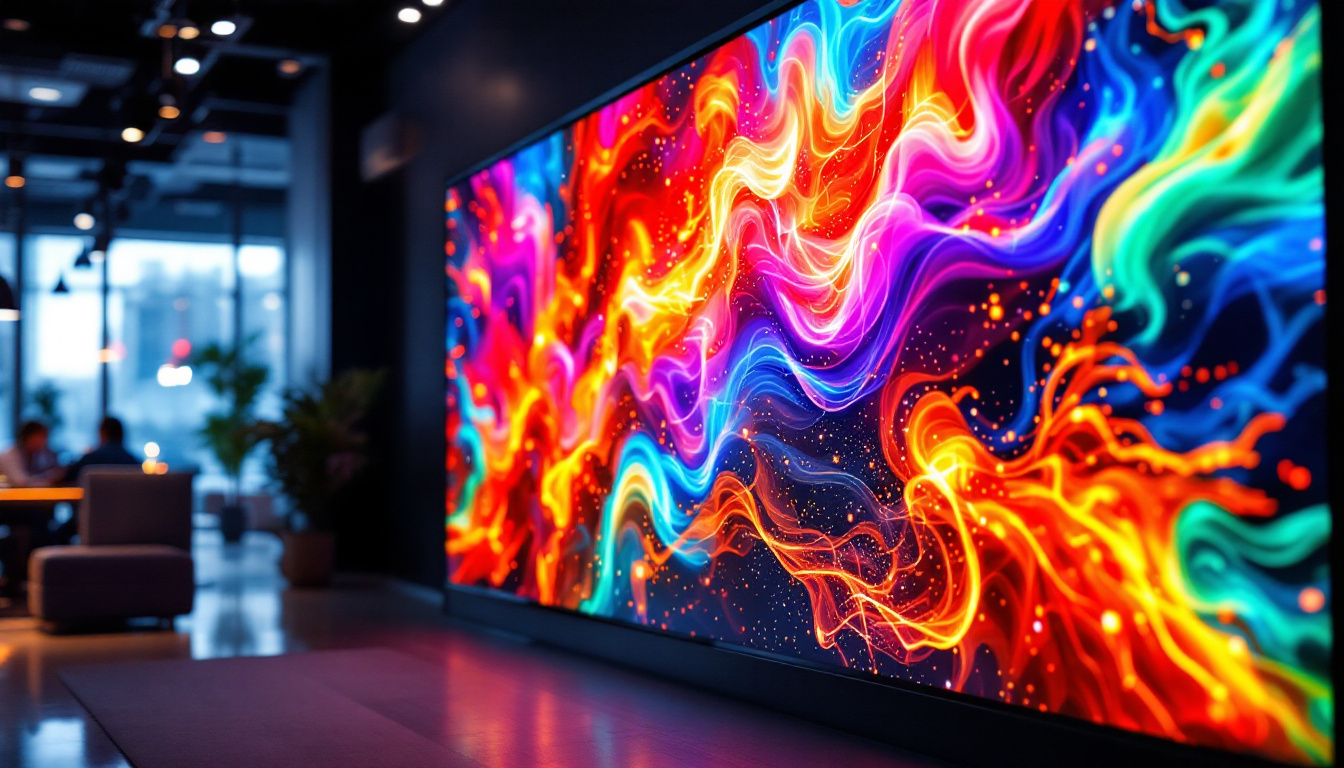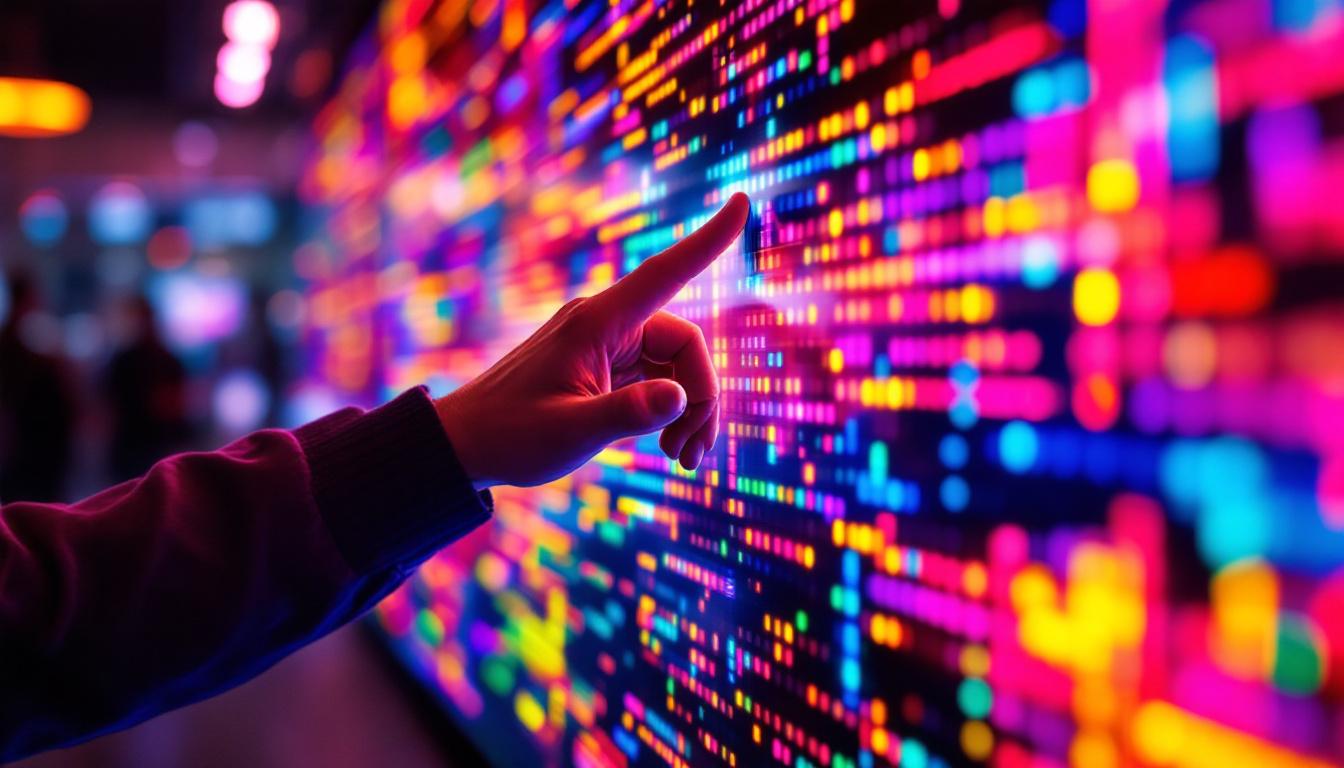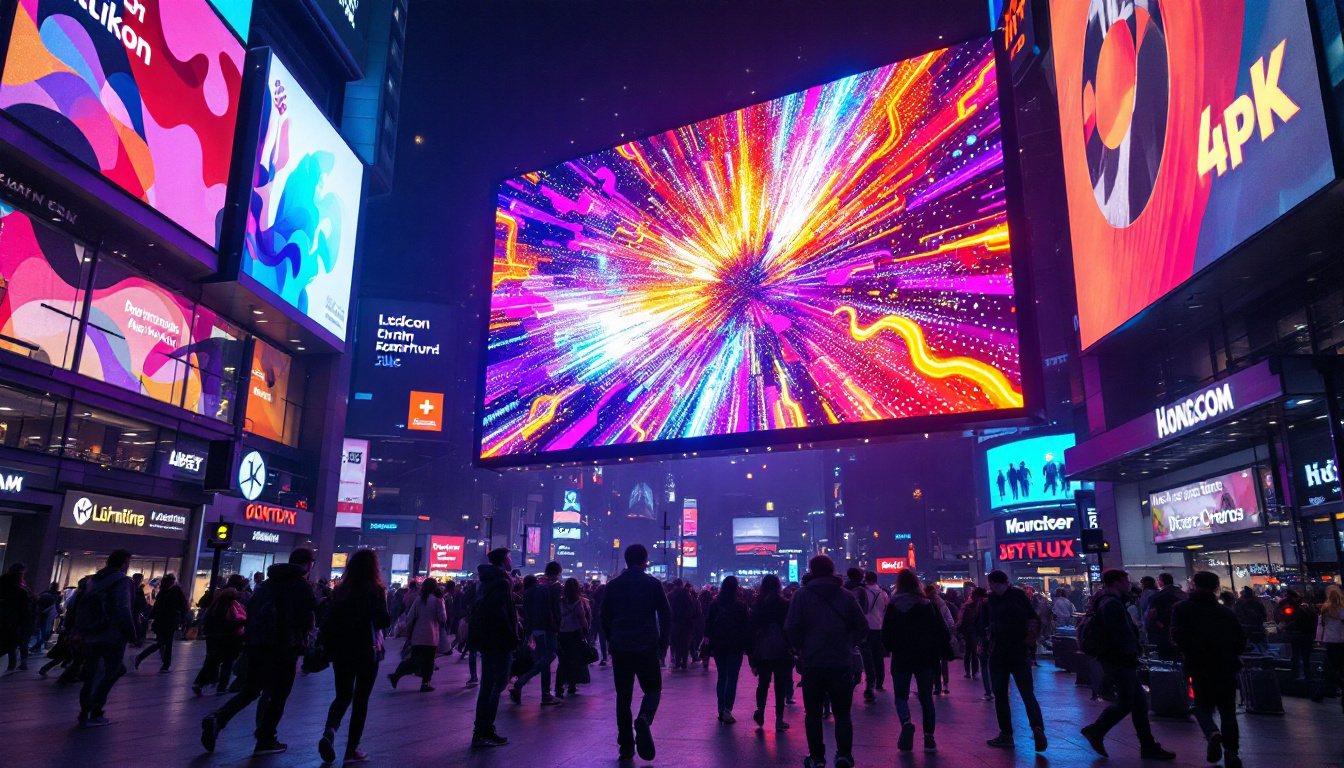In the realm of visual technology, the evolution of display systems has transformed how we experience content. Among these advancements, LED displays have emerged as a popular choice, often overshadowing traditional projector screens. This article delves into the intricacies of LED displays, exploring their advantages, applications, and how they compare to conventional projector screens.
Understanding LED Displays
LED, or Light Emitting Diode, displays utilize semiconductor technology to produce light and create images. Unlike traditional displays that rely on backlighting, LED screens emit their own light, resulting in brighter images and more vivid colors. This fundamental difference is what sets LED displays apart from other technologies.
The Technology Behind LED Displays
At the core of LED displays lies the concept of diodes. These tiny components are capable of emitting light when an electric current passes through them. In an LED display, thousands of these diodes work in unison to create images. The arrangement of red, green, and blue diodes allows for a full spectrum of colors, enabling the display to render images with remarkable accuracy.
There are two main types of LED displays: direct-view and backlit. Direct-view LED displays consist of individual diodes that form the entire screen, while backlit LED displays utilize a liquid crystal display (LCD) panel illuminated by LED lights. Each type has its own unique advantages and applications, catering to different needs and preferences. Direct-view displays, for instance, are often used in large outdoor signage and digital billboards due to their ability to maintain visibility in bright sunlight, while backlit displays are commonly found in televisions and computer monitors, providing a balance of quality and energy efficiency.
Advantages of LED Displays
LED displays offer several advantages over traditional projector screens, making them an appealing choice for various settings. One of the most significant benefits is brightness. LED displays can achieve higher brightness levels than projectors, making them suitable for environments with ambient light. This characteristic ensures that images remain clear and vibrant, even in well-lit rooms.
Another notable advantage is the lifespan of LED displays. Typically, LED screens can last over 50,000 hours, which far exceeds the lifespan of conventional projector bulbs. This longevity translates to lower maintenance costs and less frequent replacements, making LED displays a more cost-effective solution in the long run. Additionally, LED technology is inherently more energy-efficient, consuming less power than traditional display technologies. This efficiency not only reduces electricity bills but also contributes to a smaller carbon footprint, making LED displays a more environmentally friendly choice for consumers and businesses alike.
Moreover, the versatility of LED displays cannot be overlooked. They can be found in a myriad of applications, from small screens in handheld devices to massive video walls in stadiums and concert venues. Their lightweight and thin profile allows for easy installation in a variety of settings, whether mounted on walls or suspended from ceilings. This adaptability makes LED displays a popular choice for advertising, entertainment, and even art installations, where dynamic visuals can enhance the overall experience for viewers.
Applications of LED Displays
LED displays have found their way into a myriad of applications, from commercial settings to personal use. Their versatility allows them to be utilized in various environments, each benefiting from the unique features of LED technology.
Commercial Use
In commercial settings, LED displays are often used for advertising and information dissemination. Digital billboards, for instance, leverage the brightness and clarity of LED technology to capture the attention of passersby. These displays can easily be updated with new content, allowing businesses to promote their products and services dynamically.
Additionally, LED displays are increasingly common in retail environments. Stores utilize them to showcase promotions, product information, and even interactive displays that enhance the shopping experience. The ability to display high-quality images and videos makes LED screens an invaluable tool for engaging customers. Furthermore, the energy efficiency of LED technology allows retailers to operate these displays for extended hours without incurring exorbitant electricity costs, making them a sustainable choice for businesses looking to maximize their advertising impact.
Entertainment and Events
In the entertainment industry, LED displays have revolutionized the way events are experienced. Concerts, festivals, and sporting events often feature large LED screens that broadcast live footage, enhancing the experience for attendees. These displays provide a clear view of the action, ensuring that even those seated far from the stage can enjoy the performance.
Moreover, LED technology is also prevalent in theaters and cinemas. The sharpness and color accuracy of LED displays create an immersive viewing experience, drawing audiences into the story being told on screen. As technology continues to advance, the integration of LED displays in entertainment settings is likely to expand further. For instance, virtual reality experiences are increasingly being paired with LED displays to create multi-dimensional environments, allowing audiences to feel as if they are part of the action. The versatility of LED technology also extends to outdoor events, where weather-resistant displays can be employed to ensure that performances are not hindered by elements, thus broadening the scope of where and how events can be held.
LED Displays vs. Projector Screens
The debate between LED displays and projector screens is ongoing, with each technology offering distinct advantages and disadvantages. Understanding these differences can help consumers make informed decisions based on their specific needs.
Image Quality
When it comes to image quality, LED displays generally outperform traditional projector screens. The brightness and contrast levels of LED screens contribute to sharper images, while projectors may struggle in well-lit environments. Additionally, LED displays maintain color accuracy and vibrancy, ensuring that images appear as intended.
However, projectors can offer larger screen sizes at a lower cost, making them a viable option for those seeking a cinematic experience. For instance, a projector can create a massive image on a wall or screen, which can be particularly appealing for home theaters or large presentations. Furthermore, advancements in projector technology, such as 4K resolution and laser projectors, have significantly improved their image quality, making them a competitive choice for high-definition viewing. Users can now enjoy immersive experiences with projectors that rival some LED displays, especially in darkened environments where they truly shine.
Installation and Portability
Installation and portability are other critical factors to consider. LED displays are typically easier to install, often requiring only a power source and a mounting solution. In contrast, projectors may need additional equipment, such as screens and mounting brackets, which can complicate the setup process.
Portability is another area where LED displays shine. Many LED screens are lightweight and can be easily transported, making them ideal for events and presentations on the go. Projectors, while also portable, often require careful setup to ensure optimal performance, which can be a drawback for those needing a quick solution. Moreover, the need for a suitable projection surface can limit the flexibility of projectors in certain environments. In contrast, LED displays can be used in a variety of settings, from corporate offices to outdoor events, without the need for additional equipment. This versatility makes LED displays a popular choice for businesses and individuals who prioritize convenience and adaptability in their visual technology solutions.
Future of LED Displays
The future of LED displays looks promising, with ongoing advancements in technology paving the way for even more innovative applications. As manufacturers continue to develop new techniques and materials, the capabilities of LED displays are expected to expand significantly.
Emerging Technologies
One area of growth is in flexible LED displays. These screens can bend and conform to various shapes, opening up new possibilities for creative installations. From curved screens in retail environments to wearable technology, flexible LED displays are set to redefine how visuals are presented. This flexibility not only enhances aesthetic appeal but also allows for more dynamic interactions in public spaces, where displays can wrap around structures or be integrated into furniture, creating immersive environments that engage viewers in unique ways.
Additionally, advancements in resolution and pixel density are making LED displays even more appealing. Higher resolutions, such as 8K, are becoming increasingly accessible, allowing for stunning image quality that was once reserved for high-end applications. As these technologies become more mainstream, consumers can expect to see a wider range of options in the market. Furthermore, the development of microLED technology promises to deliver even greater brightness and color accuracy, making displays not only more visually striking but also more energy-efficient, which is a critical factor in today’s eco-conscious landscape.
Integration with Smart Technology
Another trend is the integration of LED displays with smart technology. As homes and businesses become more connected, the ability to control displays through smart devices is becoming a standard feature. This integration allows users to customize their viewing experiences, from adjusting brightness levels to scheduling content updates. Such capabilities can enhance user engagement, enabling personalized content delivery that resonates with specific audiences, whether in a corporate setting or a home environment.
Moreover, the rise of augmented reality (AR) and virtual reality (VR) is likely to influence the development of LED displays. As these technologies evolve, the demand for high-quality, immersive visuals will drive innovation in display technology, further enhancing the capabilities of LED screens. The potential for LED displays to serve as interactive surfaces in AR applications can transform how we experience digital content, blurring the lines between the physical and digital worlds. This convergence not only presents exciting opportunities for entertainment and gaming but also for education and training, where immersive learning experiences can be created by integrating LED technology with AR tools.
Conclusion
LED displays represent a significant advancement in visual technology, offering numerous advantages over traditional projector screens. With their superior brightness, longevity, and versatility, LED screens have become the go-to choice for various applications, from commercial advertising to entertainment.
As technology continues to evolve, the future of LED displays looks bright. Emerging technologies and smart integrations are set to enhance the user experience, making LED displays an integral part of modern visual communication. Whether for business, entertainment, or personal use, understanding the benefits and applications of LED displays can help individuals and organizations make informed decisions that align with their needs.
Discover LumenMatrix LED Display Solutions
Ready to elevate your visual experience with the latest in LED technology? LumenMatrix is at the forefront of innovation, offering a diverse range of LED display solutions tailored to meet your needs. From captivating Indoor LED Wall Displays to dynamic Outdoor LED Wall Displays, and from versatile Vehicle LED Displays to stunning LED Sports Displays, our products are designed to make your brand stand out. Explore our LED Poster Displays, Floor LED Displays, Custom LED Displays, All-in-One LED Displays, and LED Transparent Displays to discover how you can transform your space and engage your audience. Embrace the future of visual communication with LumenMatrix. Check out LumenMatrix LED Display Solutions today and see your message come to life with unparalleled clarity and impact.

